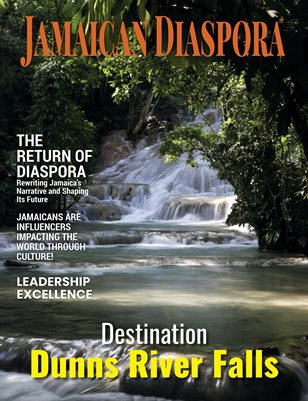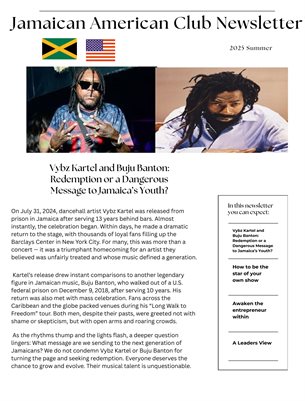
Written by Milton Maragh
The age of a person or country is generally associated in our minds with growth, development and progress.
Progress is measured by relative success or failure. The recent challenge by Dr Peter Phillips to Jamaican opposition leader Portia Simpson-Miller's leadership of the People's National party (PNP) brought the issue of age and national development to the fore.
The 59 year-old Phillips, from a strong political science background was pitted against 63 year-old Simpson-Miller, seen by many of her critics as a populist who was not exposed enough to academia. Both had supporters spread across youth and experience but the youth seemed to be more in the wings.
But if the 70 year-old party typifies more of the spirit of Jamaica for the number of years it has held government compared to the incumbent Jamaica Labour Party that led the island at independence from Britain in 1962, should not its vision embody and embolden youth or at least a younger leadership, many are asking.
Against this background, we looked at recent and contemporary leaders for any relationship between their age and their impact. There may be pattern when we look at the correlation between the age of our most powerful leaders and the time they either formed new organisations or assumed leadership of others already in existence.
Let's enumerate starting with - Marcus Garvey who was born in 1887 and formed the People's Progressive Party in 1929 at age 43;
• Norman Manley born 1893 and one of the founders of the PNP in 1938 at age 45;
• Alexander Bustamante (Clarke) born 1884 and formed JLP in 1943 at age 59;
• Hugh Shearer born 1923 and assumed JLP presidency and PM in 1967 at age of 44, on the sudden death of Donald Sangster, aged 56, after two months as prime minister;
• Michael Manley, born 1924 and became PNP president in 1969 at age of 45 and PM in 1972;
• Edward Seaga, born 1930 and successfully challenged Shearer for JLP leadership at age 44 in 1974, becoming PM in 1980;
• P.J. Patterson born 1933 succeeded Michale Manley as PNP leader and prime minister in 1992 at age 59 (with Simpson-Miller the loser at age 47);
• Simpson-Miller born 1945 won PNP presidency and became PM at age 61 in 2006;
• Bruce Golding, born 1947, left the JLP in 1994 at age 47 to form the National Democratic Movement (NDM) and returned at 58 to lead JLP in 2005 and became PM in 2007 at 60.
Phillips, who was born in 1949, lost in his first attempt to unseat Simpson-Miller in 2006 at age 57 and repeated his failure in 2008.
From the forgoing it would appear that those leaders in their 40s tend to have the fire in their bellies to fight for leadership. We can propose that leaders who came to power at about age 45 had roughly 20 years to provide strong and inspiring leadership; but those taking it on in their late 50s and 60s would have lost the fire and are not necessarily the best to lead countries like Jamaica as they tend to be nostalgic and too focused on the past rather than the future opportunities.
Bustamante first came to power in the first general election under universal adult suffrage in 1944, but lost to his cousin Norman Manley in 1955 and '59 before winning an election to lead into independence in 1962 and and held onto to power until 1967 at age 83, although because of Bustamante's incapacitation, Sangster acted as prime minister from 1964 until 1967 when he won his own mandate. Sangster did not fight for the leadership but inherited it from an enfeebled Bustamante.
It makes it easy to conclude that he Sangster was not a fighting leader at age 53 in 1964 when he began acting for Busta. If Bustamante had good leadership development skills he might have handed the reins of the JLP to Sangster in 1955 after the party was beaten by the PNP in that election. That would have given Sangster a clear 12 years to lead the JLP through his best years of his life.
This pattern of failed leadership development continued through both political parties as seen with Michael Manley who should have handed over to Patterson in 1980 after the loss to Seaga so he could have had a chance to stamp his image on the PNP and to yield to a younger leader in 2000/2002. The PNP should now be led by someone in their late 40s/early 50s and not early 60s. But since Patterson did challenge Manley in 1980 as Seaga did Shearer in 1974, that says something also about his desire to lead.
On the JLP side, Seaga held onto leadership far too long and killed the fire in Golding back in 1994. Now Golding is likely to repeat the same mistake because when he became PM at age 61 in 2007 he should have appointed a deputy PM in his/her 40s. Instead he selected Dr Ken Baugh at an age that seems elusive but cannot be younger than 60 years.
Golding should make the move to appoint an early 40s deputy PM to prepare the path for that person to assume leadership before 50 and Golding should walk away in 2012 regardless of the outcome of the polls due then. Simpson also needs deputy leaders in their 30s and 40s while using her grassroots popularity to lead the PNP into the next election (local or national) and step aside win or lose.
Leadership development is weak in every aspect of Jamaican society. It is this widespread failure in leadership that is causing widespread failures socially, economically and politically. And how does this age analysis relate to Jamaica's national development? We can delineate three successive stages of development. The first is cultural followed by political and then economic development. The ultimate goal of a nation is to become a prosperous, powerful people and first we have to become a united people in a similar manner to the United States' evolution from a people born out of many immigrants from Europe and elsewhere who have melded into an American culture.
While many see the period between the political and labor upheavals in the 1930s and independence in 1962 as a period of political advance, it may be seen as a period of cultural development that began with Marcus Garvey and culminated in 1992 with Patterson becoming PNP president and PM
Garvey and Michael Manley like Marley and Miss Lou may really be more cultural than political leaders. Over two generations they helped to shape the national identity and self confidence of Jamaicans as a people exemplified by an athlete like Usain Bolt, at 22 being so confident and proud on the track and media stage. We can now say we are a PEOPLE and now we need to become powerful before we can become prosperous.
In this analysis, Jamaica will continue to bear the pains of political development to maturity by the 2020s, where hopefully we will reach beyond the US$5000 per capita GDP mark when we will start to see rapid economic growth through to the 2050s and the stage of economic development, property and security.



